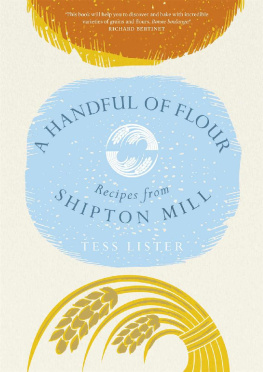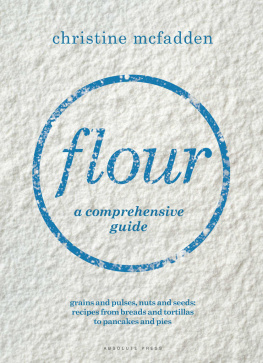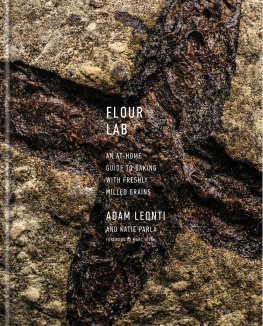

Contents
On behalf of Shipton Mill this book is dedicated to the four friends who were there from the start, and the hundreds of craftsmen who have helped us along the way willingly and unselfishly passing on their knowledge and skills and freely giving their time in particular, Tony Ashcroft. Also to Stuart Hall and Burt Andrews, whose millwright skills were instrumental in the foundation of the Mill. And to my dad, whose vision and tireless efforts have powered Shipton Mill to what it is today.
The public unrest, that started in Petrograd, now has spontaneous and threatening character. They are based on lack of baked bread and insufficient delivery of flour that originates panics, but mainly, on lack of confidence to the government that is incapable to save the country from the dangerous situation There is no faith in the garrison forces. The reserve battalions of the guard are flooded with insurrection If this movement is extended over the whole army it will result in downfall of Russia and the dynasty, inevitably
So many of us love to fill our kitchens with the flavours and smells of baking, but there is one key ingredient upon which the success of a recipe can rise or fall, and which many people know relatively little about. Flour. This is a book about flour, and an introduction to some of its multiple and varied uses.
Of course, flour is just one of several ingredients to go into the finished product, and this is not to say that the quality of all the ingredients are not equally important. They are. The right (or wrong) choice of flour, however, can alter your entire creation. Flour can define structure, appearance, texture and flavour. Sometimes the choice can be confusing.
Broadly, most people are relatively comfortable with the knowledge you can use strong white flour and wholemeal flour for bread, and plain flour for cakes and pastries all made from wheat. The array of alternative flours and grains available can be baffling, and some of their properties and flavours relatively unknown. I have met bakers who see no need to venture beyond these three types. However, while these flours are popular for good reason due to their versatility and ease of use, it seems a shame to ignore all the other grains the world has to offer. Stunning flavours, colours and textures are at your fingertips, to introduce versatility and breadth to your baking, and variety to your diet.

Flours can be ground from seeds and nuts, as well as grains (although for simplicity I sometimes just refer to grains). For example, nuts such as almonds and hazelnuts can be ground up and used to make beautiful cake sponges or to add texture to pastry.
Flours are also milled from other grains which date back for thousands of years, often termed ancient grains. There is no official definition for an ancient grain, but the term is used to refer to grains that remain broadly the same now in composition as they were thousands of years ago. Einkorn, emmer, spelt and Khorasan are all considered ancient grains, along with grains such as quinoa and amaranth, among others. By comparison, modern varieties of wheat are often hybridised and bred with other varieties, to form constantly evolving specimens.
This book will introduce you to the characteristics and personalities of many of the different types of wheat flour, as well as those made from other grains, nuts and seeds, so that you can learn about the extraordinary variety available to us. Why limit yourself to two or three flours from the same grain when there is an incredibly diverse selection to choose from, which can make absolutely sensational recipes?
With this in mind, the recipes in the book showcase a wide range of flours as well as their myriad uses. Through cooking with them in simple recipes, you will get to know them better. Most of all, this book is about experimenting. In my opinion, one of the best ways to get to know and understand flour is just to have a go, get the feel and taste of it, and if it doesnt work out, keep practising and adjusting until it does. Although a lot of baking is down to science, much can be learned through instinct and practice as well.
So, without further ado, roll up your sleeves, fire up the oven and dive in to this rich and exciting world of aromas and flavours.

Extracts translated from telegrams from M. V. Rodzianko, the Chairman of the Fourth State Duma, to Tsar Nicholas II, dated 26 and 27 February 1917, from the State Archive of the Russian Federation

 WAS in 1979, just a few years after his twentieth birthday, when my father and four of his friends discovered the ruined Shipton Mill nestling deep within a valley in the Cotswolds. Circled by the river Avon and set on the edge of an ancient wood, the mill had remained untouched for half a century. The place was full of dreams and was exactly what they had been searching for. This was the beginning of their adventure to revive and restore Shipton Mill and get the millstones turning again.
WAS in 1979, just a few years after his twentieth birthday, when my father and four of his friends discovered the ruined Shipton Mill nestling deep within a valley in the Cotswolds. Circled by the river Avon and set on the edge of an ancient wood, the mill had remained untouched for half a century. The place was full of dreams and was exactly what they had been searching for. This was the beginning of their adventure to revive and restore Shipton Mill and get the millstones turning again.
At that time, the five friends were restoring houses in London, learning the artisan skills of fine plasterwork, painting, gilding, and renovation. Heavily influenced by the nineteenth-century Arts and Crafts movement, which valued the skills of people and the influence of man above machine, they dreamed of a workers cooperative and of balancing their hectic work schedules in London with the slow rhythm of artisan milling. The watermill at Shipton Wood was to become their first project. They rebuilt the mill themselves, quite literally from the rubble.
The photographs taken by my grandfather Joe (whom my brother is named after) depict a derelict and abandoned site, made all the more haunting captured in black and white. Nettles were growing out of gaping black holes where once there were windows. There was no barn, and the stones were crumbling. Joe lived in the neighbouring town of Malmesbury, where my mother grew up, so with his help and encouragement local craftsmen were found and skilled millwrights enlisted. Learning an artisan profession was part of the ethos behind starting the Mill but with the British economy on the floor as they set to work all around them people professed it was madness.
My father and his friends worked out that in theory, they could mill for one day and make enough money to survive for one week. Somehow, this didnt quite work out in practice, but I like the idea. After a few years, the others were drawn to different jobs and returned to London or picked up alternative artisan crafts, but they were a strong part of the impetus to get the Mill working again. The Mill was also my parents home, becoming a family home when I was born, and Joe a few years later.
Milling had been carried out for centuries on the exact spot of Shipton Mill today. A mill was recorded on the site in the Domesday Book in 1086. Then, it was one of thousands of mills in the country. The business and equipment has changed over the years, but the sense of place and continuity is at the heart of what we do. We are just one of the links in a chain stretching back for hundreds of years, so the balance of innovating while also staying true to tradition is important to us.
Next page













 WAS in 1979, just a few years after his twentieth birthday, when my father and four of his friends discovered the ruined Shipton Mill nestling deep within a valley in the Cotswolds. Circled by the river Avon and set on the edge of an ancient wood, the mill had remained untouched for half a century. The place was full of dreams and was exactly what they had been searching for. This was the beginning of their adventure to revive and restore Shipton Mill and get the millstones turning again.
WAS in 1979, just a few years after his twentieth birthday, when my father and four of his friends discovered the ruined Shipton Mill nestling deep within a valley in the Cotswolds. Circled by the river Avon and set on the edge of an ancient wood, the mill had remained untouched for half a century. The place was full of dreams and was exactly what they had been searching for. This was the beginning of their adventure to revive and restore Shipton Mill and get the millstones turning again.